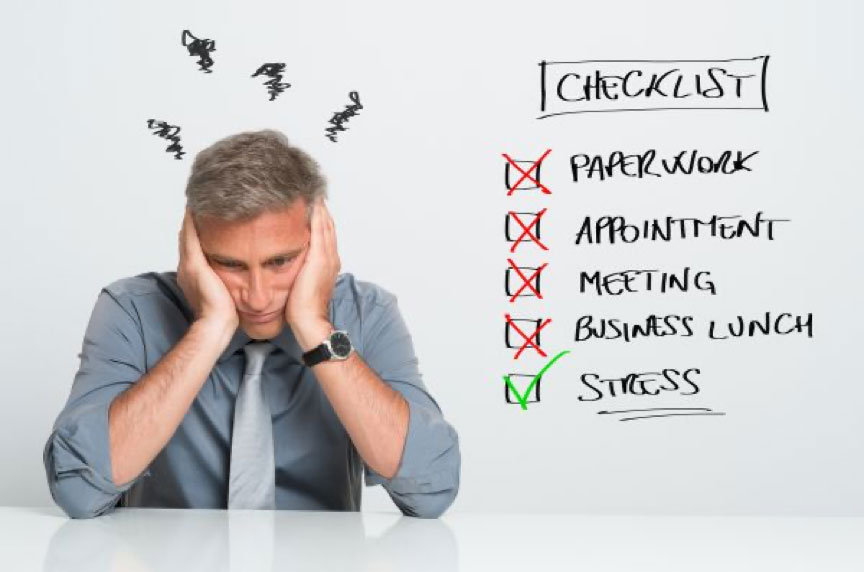Contributions and benefits inspire some to acquire management positions, but effective leadership requires more than a job title. Roles and responsibilities in the workplace vary according to job industry and company needs. There are various levels and styles of leadership, but one common experience shared by many in management positions is stress. How can we minimize stress for smarter and simplified work performance? Is working to the point of exhaustion detrimental or essential for successful leadership? Let’s explore together!
Working long shifts and cutting on lunch breaks may seem like heroic acts for your team, but in reality you may be cheating out your potential and company success. According to the Statista – The Statistical Portal, workload and interpersonal relations are the main causes of occupational stress. Statista goes on to state, “More than one third of employees lose one hour or more per day in productivity, while almost one third miss between three and six days per year due to stress.” Eustress is a healthy form of stress that helps increase focus and productivity. Burnout on the other hand occurs when faced with numerous responsibilities, job expectations beyond our reach, issues with coworkers, multiple deadlines, and other factors leading to workplace stress. The good new is there are ways to work smarter and more simplified to help decrease stress and prevent burnout!
8-Stress-Reducing Tips to Prevent Burnout:
1. Take a break.
Each day brings numerous demands and deadlines, but it’s crucial to take at least a 30-minute break when working long hours. Employers offer different break schedules depending on the number of hours worked each day. Use break times to disconnect from work-related activities. This provides an opportunity to step away from stressors, recharging the mind with more creativity and focus.
2. Don’t skip on meals.
The brain requires glucose (sugar) for optimal concentration and mental performance. Skipping on meals can influence energy levels, concentration, and work performance as well as your overall health.
3. Get a 5 min breather.
Some days can be more challenging than others. If you are having a stressful workday, take 5 minutes to breathe and calm yourself down. Ask your employer if you can take 5 minutes of breathing space. Something as simple as stepping outside for 5 minutes can make a difference in decreasing stress levels.
4. Plan your day in advance.
Unexpected situations occur, yet we can establish workflow consistency by planning activities and tasks ahead of time. For instance, make a list of projects and responsibilities requiring top priority and accomplish these early during the day, listing less important tasks for the end of your workday. Some people also find it productive to schedule significant tasks during times of the day when his or her energy levels are at its peak. This allows for more proficient work and also contributes to effective time management.
5. Simplify your workload.
Breakdown projects into manageable tasks to be accomplished throughout the workday, this can decrease stress when faced with multiple deadlines. Rather than focusing on the time crunch, gear your attention to a few tasks that must be completed on a timely fashion.
6. Delegate responsibilities.
Allow other employees to assist you as much as possible. Sharing responsibilities with coworkers decreases workload and promotes teamwork and collaboration.
7. Communicate needs to higher authorities.
If you’ve tried all the suggestions listed above and others, yet still feel overwhelmed with job responsibilities it may be time to discuss your concerns with a higher authority. Your boss can provide additional suggestions and strategies that can prove beneficial.
8. Allow for introspection and reflection.
Take time to review your work habits, reflecting on areas that require improvement and change. This is not a time to judge yourself, but rather an opportunity for growth and mastering leadership skills. Reflection shares light into job situations and strategies to promote stress-reduction in the workplace.






